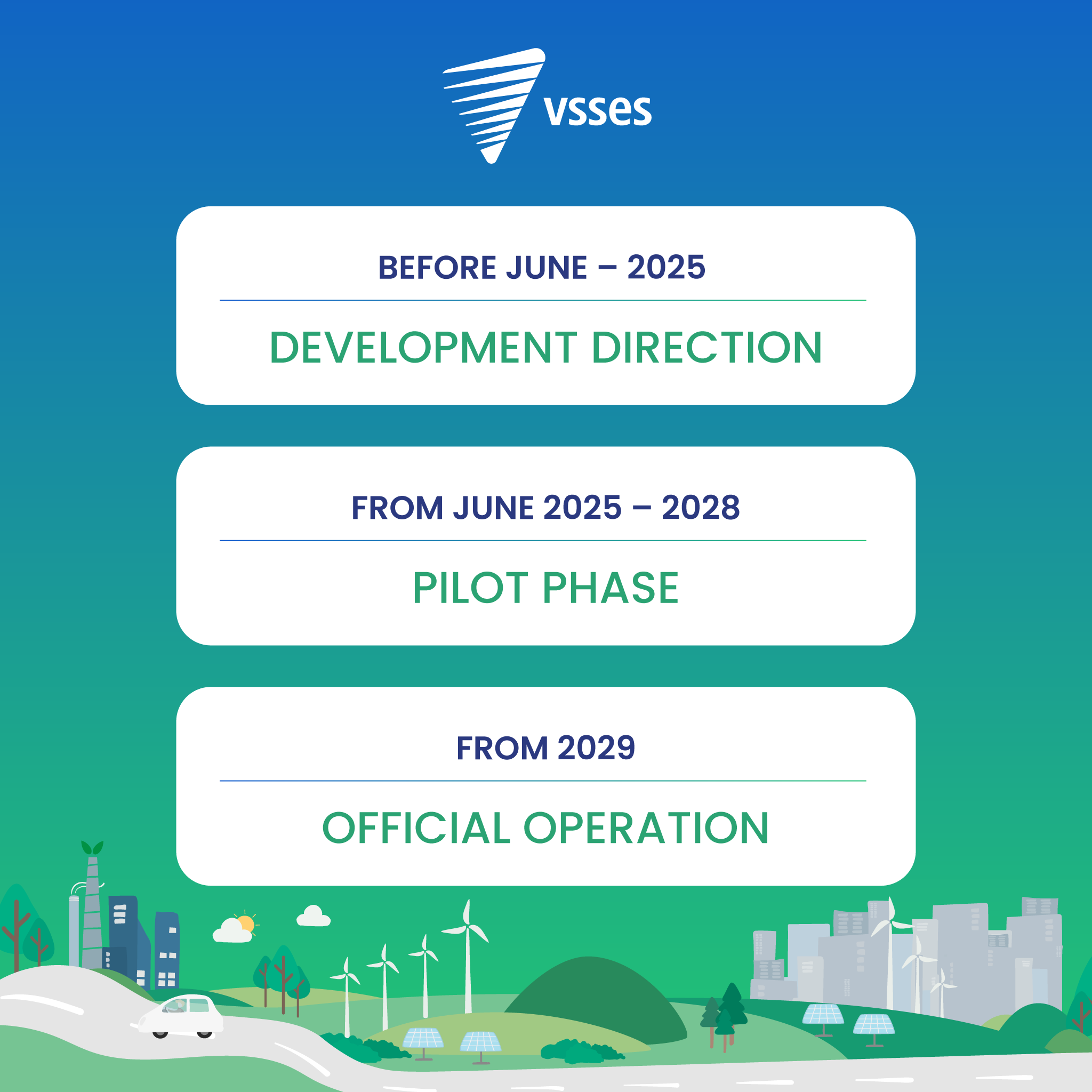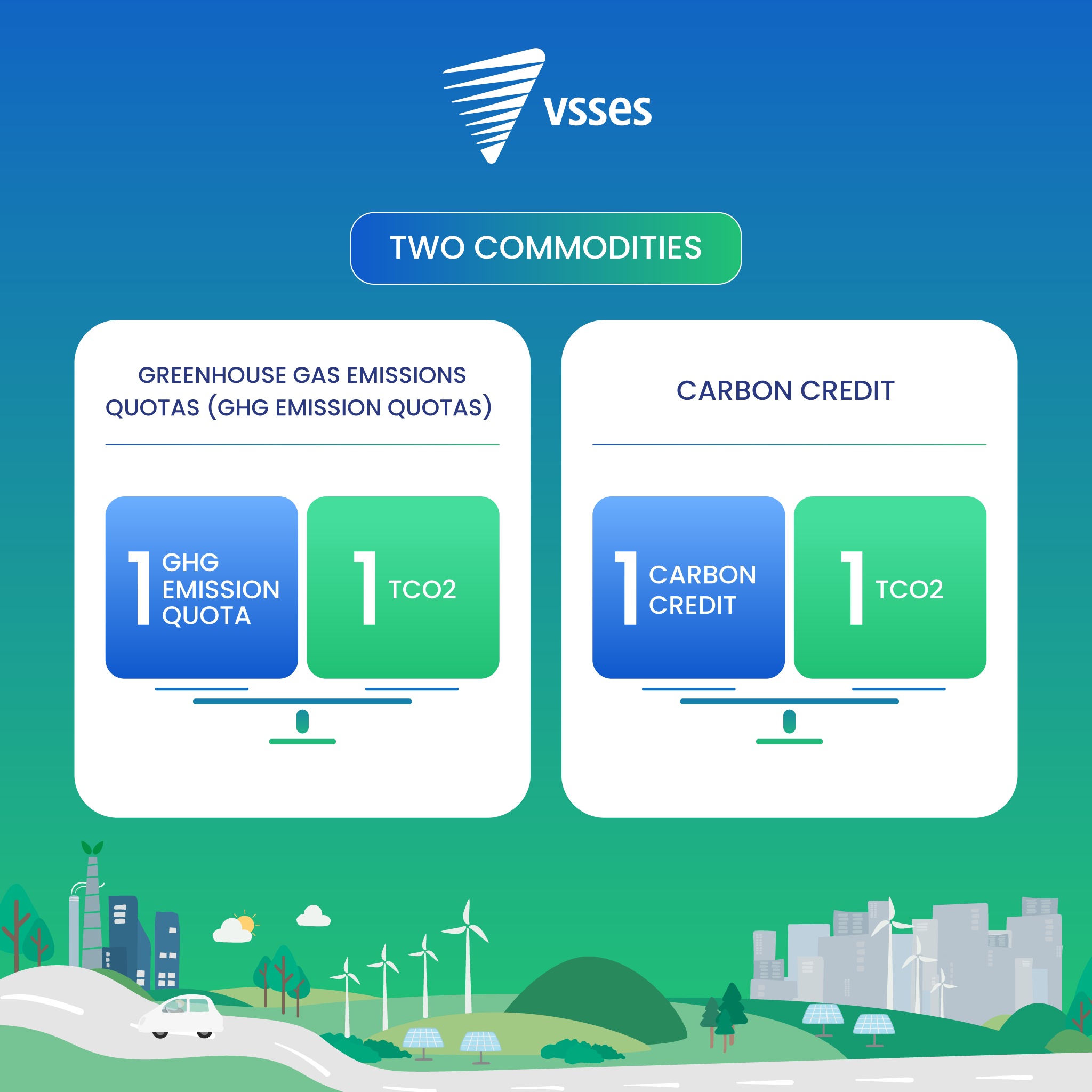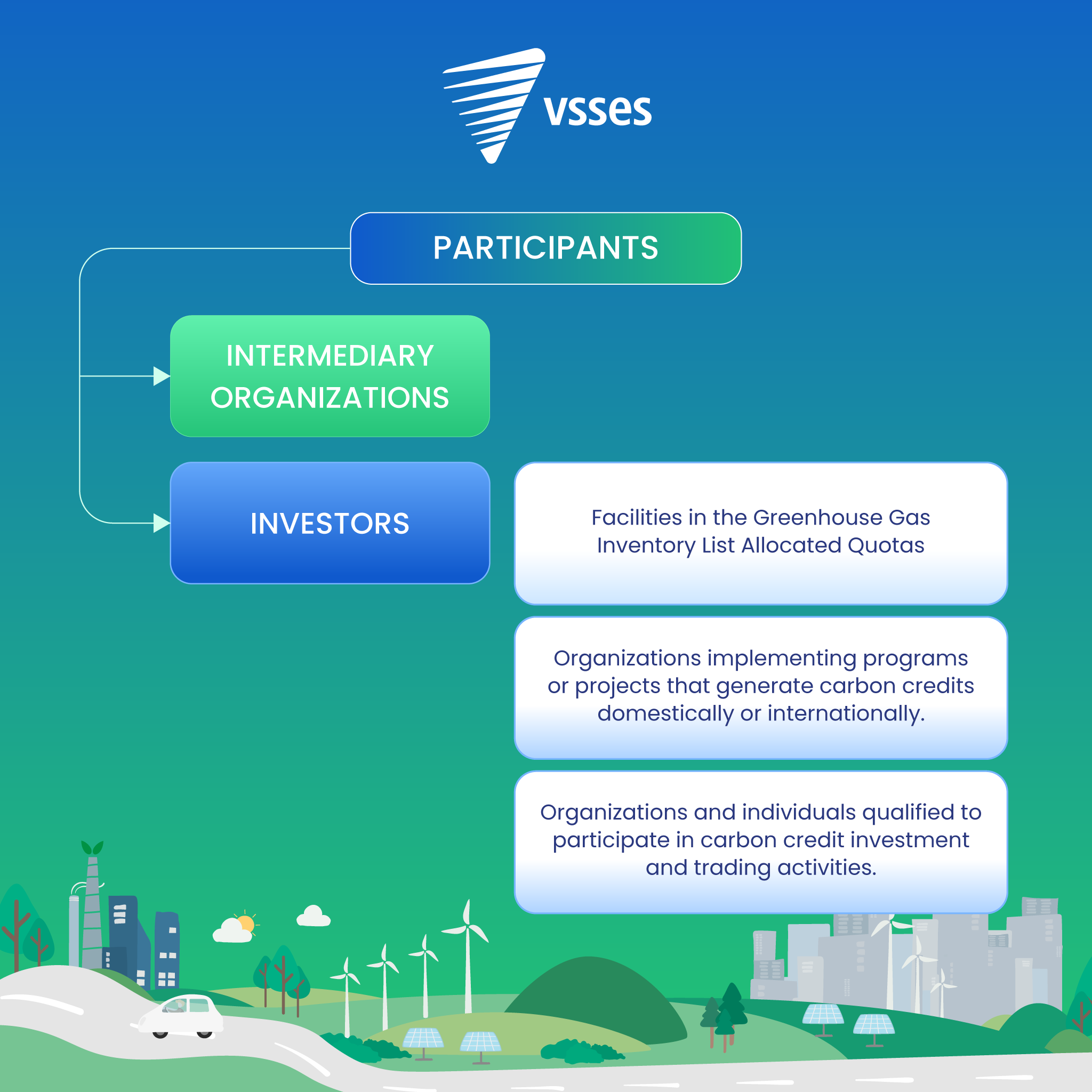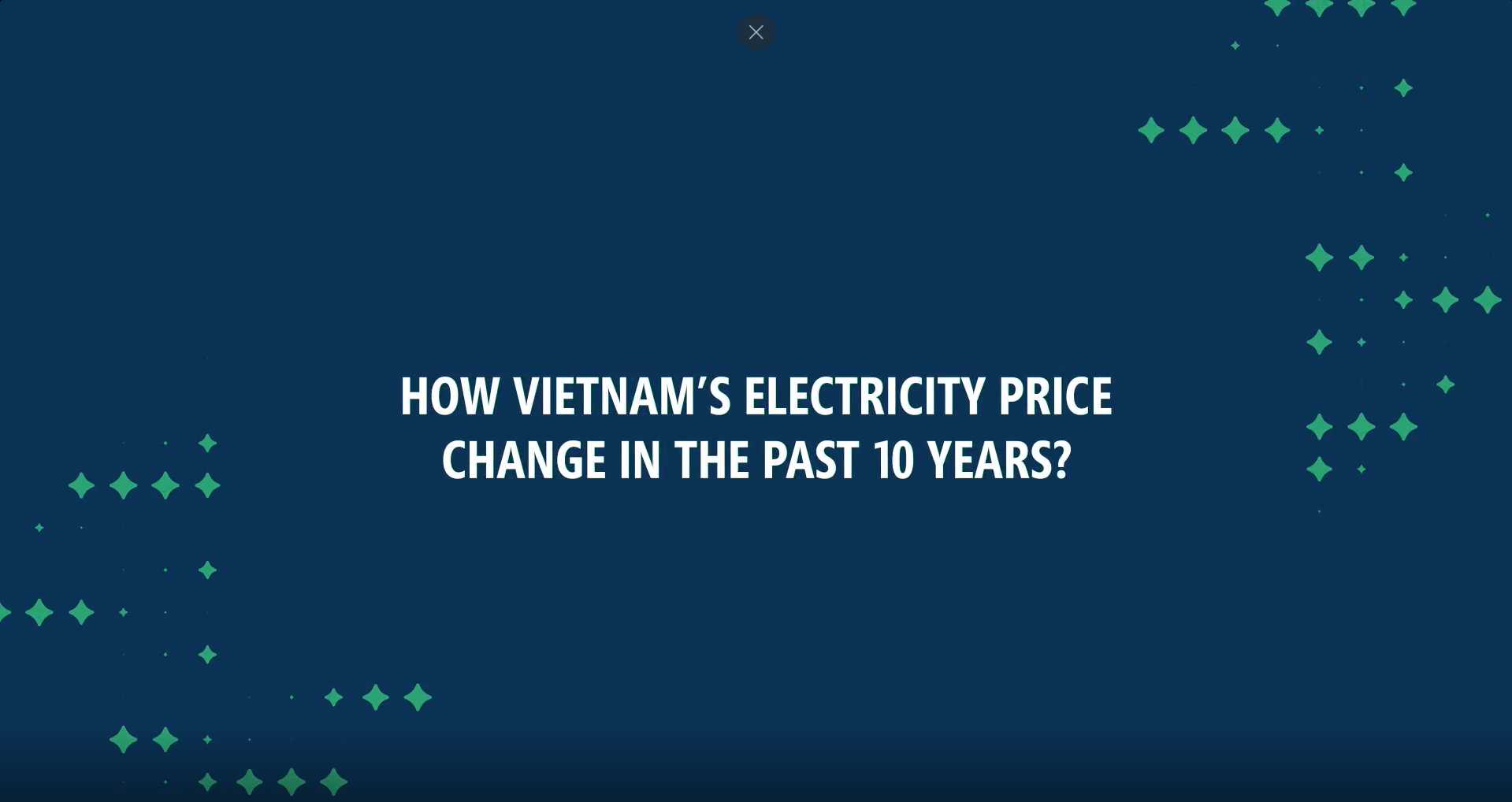VIETNAM TO PILOT CARBON TRADE EXCHANGE IN 2025
According to the Project for the establishment and development of the carbon market in Vietnam, approved by Deputy Prime Minister Tran Hong Ha, Vietnam’s carbon exchange market will be piloted from June 2025 to the end of 2028 before its official operation in 2029. Join VSSES as we review the highlights of this project and […]
According to the Project for the establishment and development of the carbon market in Vietnam, approved by Deputy Prime Minister Tran Hong Ha, Vietnam’s carbon exchange market will be piloted from June 2025 to the end of 2028 before its official operation in 2029. Join VSSES as we review the highlights of this project and the role of solar energy.
I.PROJECT PHASES AND OBJECTIVES
The project’s overall goal is to develop a carbon market in Vietnam, contributing to the achievement of greenhouse gas (GHG) emission reduction targets committed under Nationally Determined Contributions (NDC) at the lowest cost for businesses and society. According to Item 2, Section II, Article 1 of Decision 232/QĐ-TTg, the phases for the development of a carbon market in Vietnam (“Project”) are as follows:
1. Pre-June 2025 Phase
– Targets to complete the legal framework for the exchange of GHG emission quotas and carbon credits, including the development of mechanisms for carbon credit trading and offsetting.
– To establish necessary infrastructure for carbon market operations.
– To boost the management capacity of relevant Government agencies and raise awareness among businesses, organizations and individuals about the carbon market.
2. A trial phase from June 2025 to 2028
– To continue building and completing the infrastructure for carbon market operations.
– To operate the domestic carbon exchange market.
– To continue developing the legal documents and regulations to support the carbon market.
– To enhance the capacity of the government’s management agencies and ensure readiness of enterprises and individuals for the formal operation of the carbon market.
3. Fully activate phases from 2029
– To officially operate the domestic carbon exchange market.
– To continue refine legal regulations, infrastructure and improve the management capabilities of regulatory bodies, businesses, and individuals in the new phase.
II. COMMODITIES ON THE VIETNAM’S CARBON MARKET
1. Greenhouse Gas Emission Quotas (GHG emission quotas)
– According to the 2020 Environmental Protection Law, GHG emission quotas are the amount of GHG emissions caused by a country or entity for a specified period, expressed as tonnes of carbon dioxide (CO2) or tonnes of carbon dioxide equivalent (CO2e). Facilities are required to ensure that their emissions are less than or equal to the allocated emission allowance.
– If Facility A emits more than the number of allowances it holds, it must buy allowances from Facility B, which emits less than its allocated limit, to cover its emissions for the period.
– Emissions allowances are allocated by the Ministry of Natural Resources and Environment to facilities listed for greenhouse gas inventory by the Vietnam’s Prime Minister’s Decision through free allocation and auction methods. Initially, emission allowance will be limited to certain major sectors and will gradually expand over time according to the roadmap.
– According to Decree No.06/2022/NĐ-CP, establishments mandated to conduct a greenhouse gas inventory are those with annual greenhouse gas emissions of 3,000 tons of CO2 equivalent or more, or fall under one of the following categories: Thermal power plants, industrial production facilities with annual energy consumption of 1,000 tons of oil equivalent (TOE) or more; Freight transport businesses with annual fuel consumption of 1,000 TOE or more; Commercial buildings with annual energy consumption of 1,000 TOE or more; Solid waste treatment facilities with annual operating capacity of 65,000 tons or more.
2. Carbon Credit : Carbon credits available for trading on the market including:
– Carbon credits generated from domestic projects or programs under carbon credit exchange and offset mechanisms.
– Carbon credits generated from international projects, following:
+ Credits from the Clean Development Mechanism (CDM).
+ Credits from the Joint Crediting Mechanism (JCM).
+ Credits from the mechanisms under Article 6 of the Paris Agreement.
Read More: Everything You Need To Know About Carbon Credits
III. PARTICIPANTS IN THE VIETNAM’S CARBON MARKET
1. For Greenhouse gas emission allowance trading:
Facilities that release greenhouse gases, have been given emission allowances, and must report their emissions.
2. For Carbon credit trading:
– Facilities that release greenhouse gases, have been given emission allowances, and must report their emissions.
– Organizations with projects involved in carbon credit trading or offsetting.
– Organizations and individuals that buy and sell carbon credits.
IV. THE RELATION BETWEEN CARBON EXCHANGE MARKET AND ROOFTOP SOLAR ENERGY.
1. Using solar energy to reduce CO2 emissions
Solar energy is one of the most effective renewable energy sources for reducing greenhouse gas emissions, especially CO2. Solar projects can replace fossil fuel-based energy sources (coal, oil, gas), which are major CO2 emitters. Each ton of CO2 reduction achieved by using solar energy can be certified through carbon credits, indicating that this emission reduction can offset CO2 emissions from other facilities.
2. Carbon market and Renewable energy
- Solar projects can generate carbon credits through mechanisms such as CDM (Clean Development Mechanism) or VCS (Verified Carbon Standard), certifying CO2 emission reductions. These carbon credits can be traded on carbon exchanges. Businesses or countries wishing to offset their CO2 emissions (to meet sustainable development goals or international commitments) can purchase carbon credits from renewable energy projects.
- Carbon exchange plays a crucial role in encouraging businesses and countries to engage in renewable energy to reduce emissions. Those projects such as solar power are the primary suppliers for the carbon credit market, effectively replacing fossil fuel energy sources and minimizing greenhouse gas emissions.
VSSES, a pioneering company in providing rooftop solar solutions for urban areas and industrial zones, has implemented and operated numerous projects with a total capacity of hundreds of MW. As a result, it makes positive contribution to the generation of carbon credits and promote sustainable development in Vietnam.






